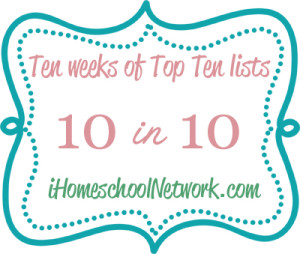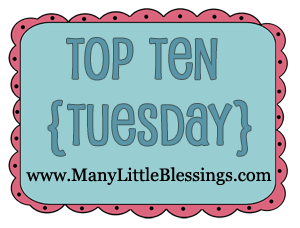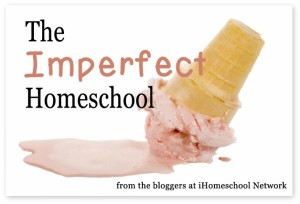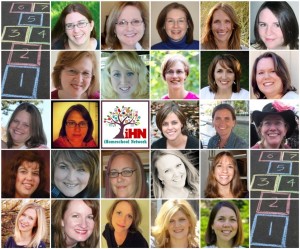 Hi, I'm Heidi and I homeschool my two sweet kids. I want them to know that learning is an exciting lifelong adventure! We love great books, unit studies, notebooking, lapbooking, and hands-on learning.
Hi, I'm Heidi and I homeschool my two sweet kids. I want them to know that learning is an exciting lifelong adventure! We love great books, unit studies, notebooking, lapbooking, and hands-on learning.The Pros and Cons of Homeschool Standardized Testing
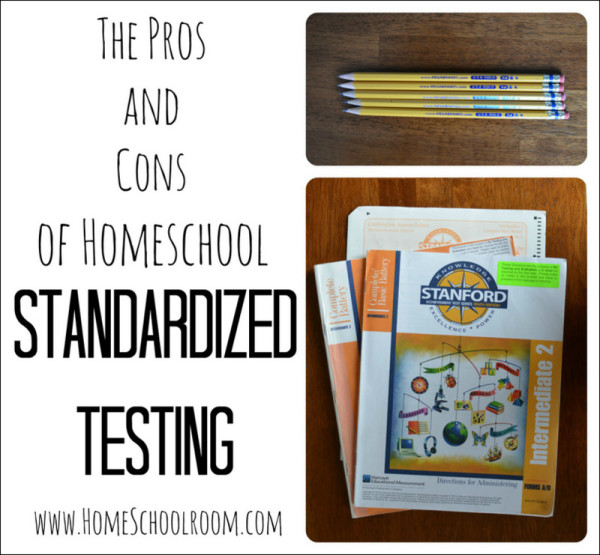
This was our last week of full-time school before we slide (or jump excitedly) into our relaxed summer school schedule. So that meant completing standardized tests this week. In Maine we have two options for fulfilling our state homeschool requirements: obtain a portfolio review from a certified teacher or complete standardized tests.
Why do I choose standardized tests over the portfolio review?
The portfolio review would be easy for me because we love notebooking and keep up with our binders all year long. So, other than grabbing anything still up on the art wall or in my basket waiting to be filed I’d just grab their binders and go. So why in heaven’s name would I go through the pain and suffering of this week? Most other homeschoolers I know look at me like I have three heads when I say I choose the testing option. I weighed the pros and cons and decided that standardized testing is a good option for us.
The Pros of Standardized Testing
Standardized tests give my children test taking practice. I don’t give any multiple choice tests in our homeschool. In fact, other than Teaching Textbook’s quizzes our only “tests” are discussions and narration. But tests are something they’ll be facing at some point, and the ability to look over the answers and narrow them down, especially if you aren’t sure of the answer immediately is a helpful skill. From tests to obtain their driver’s permit to SATs to some jobs (like my previous life as a nurse) they will take tests in life.
Standardized tests give me information. I fully understand that my children are not a number and that our home education can’t be culled down to a list of multiple choice questions. Those test scores don’t tell the whole story of the people my children are and the diverse and deep interests they hold. That being said, I can spot weak areas and decide if I need to address them. Usually I know which areas we need to work on but this is simply an extra piece of information I can use in my planning.
The Cons of Standardized Testing
This is certainly the least fun week of our whole year. Nobody enjoys it, and by Wednesday evening we could all sense the pent up frustration of a crappy week. But even this fact has its silver lining: it sure makes us all appreciate our normal activities. Bring on the great books, art projects, classical music and poetry.
I can see how public school teachers could be pressured to “teach to the test.” It takes self control to stay focused on what really matters and not use the information to the detriment of my core values. It would be counterproductive to my personal goals to focus solely on my seven year old’s test scores at the expense of time spent immersed in history, engaged with nature, lost in classic literature or meeting the masters in art and music.
Testing at Home Versus a Testing Center
I administer the tests to my children at home. There are pros and cons to testing at home versus bringing them to a testing center or public school. On the negative side, it isn’t any more fun for me than it is for them. It can be painful to watch them on any sections where they struggle, if I believe the wording is confusing, or if I think the story I’m reading to them is drivel that I can barely pay attention to.
On the plus side, instead of just the number I see exactly which questions they get wrong–again, information for me to use as I see fit. I know the reasons behind their scores.
There are big pluses for my children. They are working in the comfort of their home and aren’t distracted by other students. I can work around their best schedules–my son works best early in the day so I was sure to administer his testing in the morning. Lastly it is efficient: if they are done we close the booklet and move on, and conversely if they take longer they aren’t pressured by seeing others finish.
The How of Standardized Testing in our Homeschool
So on to the nitty-gritty details of how we test. I registered as a tester with BJU testing, a simple process as long as you have a bachelor’s degree. I chose the Stanford Achievement Tests (abbreviated SAT–ha ha!) after research because they appeared to provide me with the most detailed information. I ordered the tests well in advance of our testing date. In the spring they take 6-8 weeks to be delivered so be prepared.
We set aside the whole week for testing. I can only test one child at a time, so we set up “testing central” in our schoolroom and while I test one child the other child must play quietly elsewhere. After each child completes one test that takes from 20-50 minutes we take a break that involves food and fun! A snack and a bike ride leaves everyone ready for more. Two tests completed for each child each day and we’re done. I don’t have them do any other “school” work, though this doesn’t mean they aren’t learning! This week we attended a play, read aloud, practiced piano, wrote letters, and put on puppet shows.
So that’s the long story. In short, yes I test my kids–even though it makes for a tiring week and you can’t put numbers on their education. I take the information and attempt to use it wisely and they get practice in a skill that will occasionally benefit them. Now on to summer vacation!
Thank you to the wonderful hostesses with fun link-ups on Fridays. Be sure to join the fun and see what other homeschoolers are up to!
Picture Books That I Just Can’t Part With!
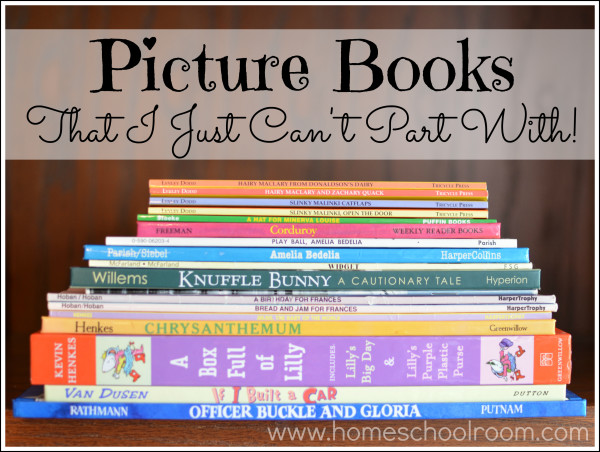
There are the picture books that I just can’t part with, even though both my kids are well past picture book age. Nobody asks me to read the same stories over and over at bedtime anymore, but certain books are here to stay.
Oh, the memories in these books! I stacked all our favorites on the kitchen table. My criteria to begin with was that both my daughter and son had loved the book, and it was enjoyable to read. (You know, not one of those books you hide on the bottom of the stack because you just can’t bear to read it again.)
The kids and I worked together to narrow it down. Choosing our favorite books is a bit like choosing among our friends, but this is a top ten list so I had to make some tough choices. I even cheated, by lumping some series and author favorites together. I just couldn’t help myself!
The book links are Amazon affiliate links. Using those links doesn’t affect your price but helps my bottom line. Thanks!
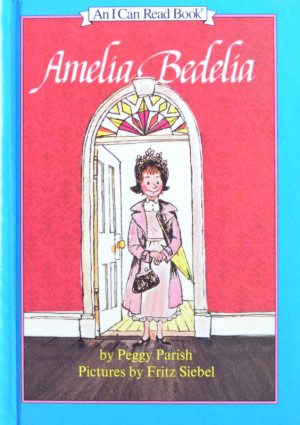
1. Amelia Bedelia by Peggy Parish
I clearly remember choosing Amelia Bedelia books from our school library growing up, and I had such fun sharing this delightful character with my children. We love to notice Amelia-Bedelia-type directions that could confuse someone.
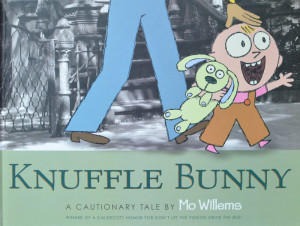
2. Knuffle Bunny: A Cautionary Tale by Mo Willems
There is so much to love about this book! One is the creative illustrating style of black and white photos with cartoon images on top. If your children have a special stuffed animal they’ll enjoy the story of Trixie losing her Knuffle Bunny. Everyone laughs at the page where Trixie goes “boneless” to show her displeasure.
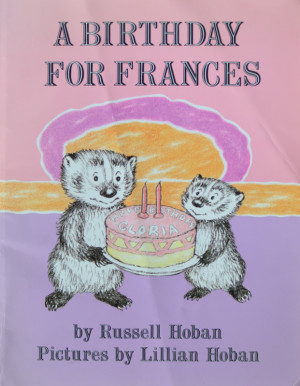
3. Frances books by Russel Hoban
Frances books are another flashback from my childhood. She’s a wonderful character with common childhood woes (jealously over a new baby sister or that baby sister’s birthday, fear of trying new foods) and a penchant for making up silly songs. A Birthday For Frances is one of our favorites because of the song “Happy Chompo to Me.”
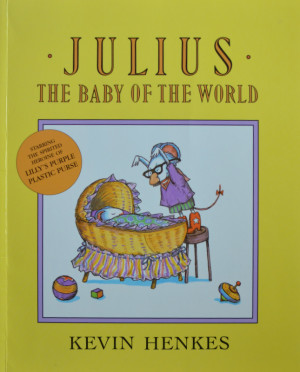
4. Julius The Baby of the World by Kevin Henkes
This book is a must read for children with new siblings. Lilly’s antics after the arrival of her new baby brother are laugh-out-loud funny, and of course there is a happy ending. We adore so many of Kevin Henkes books: Lilly’s Purple Plastic Purse, Lilly’s Big Day, Chrysanthemum, Weekend with Wendell, and Wemberly Worried.

5. Hairy Maclary and Slinky Malinki books by Lynley Dodd
The rhyming text and illustrations in these books by Lynley Dodd are endearing. There are several books featuring the skittish pup Hairy Maclary and black cat Slinky Malinki. Our favorite character appears in most titles: Scarface Claw, the “toughest tom in town.” Prepare to hiss and spit as you read the stories which leads to lots of giggles.
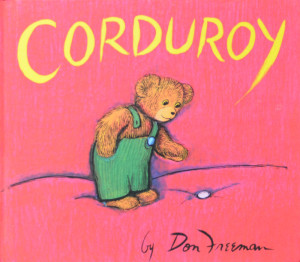
6. Corduroy by Don Freeman
I’m sure this beloved story of a little teddy bear looking for his lost button would make many people’s lists. The happy ending is perfect for sappy book lovers like me. We also love Earl the Squirrel by the same author, an adorable story of a squirrel learning to be independent.
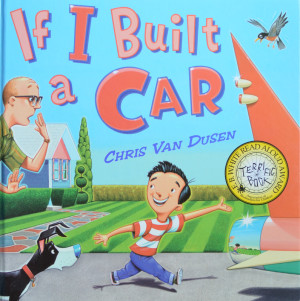
7. If I Built a Car by Chris Van Dusen
Chris Van Dusen is a Maine author and illustrator. This book highlights his wonderful rhyming text and incredible illustrations with a story of one boy’s creative car design. The Mr. Magee series by Chris is also lovely and features silly Mr. Magee and his pup on some pretty wild adventures.
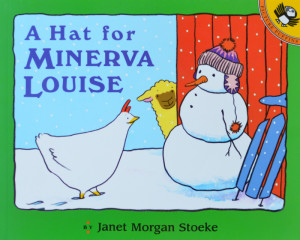
8. Minerva Louise by Janet Morgan Stoeke
If we ever get chickens one of them is sure to be named Minerva Louise. Minerva Louise isn’t happy to stay in the coop like the other chickens and this series contains simple text and pictures that show the zany misunderstandings of this quirky chicken. We’ve enjoyed all the titles: A Hat for Minerva Louise, Minerva Louise and the Red Truck, Minerva Louise on Halloween, and Minerva Louise and the Colorful Eggs.
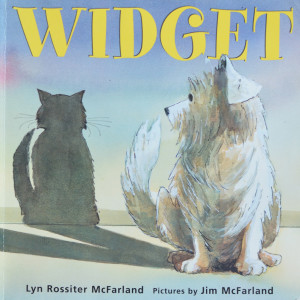
9. Widget by Lyn Rossiter McFarland
Widget is a homeless dog who finds a home in a house full of cats. It’s a great story, especially if you love dogs and cats. You’ll enjoy Widget’s attempts to act like a cat.
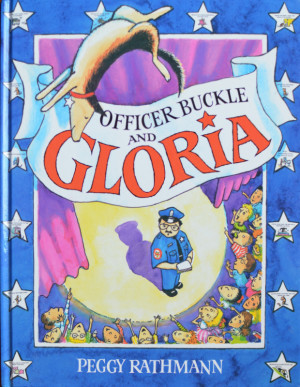
10. Officer Buckle and Gloria by Peggy Rathmann
Another great story for dog lovers, this book is about Officer Buckle, a safety-obsessed officer who gives lectures on safety rules at schools. He gets a new dog, Gloria, and she enlivens his lectures with hilarious behind-his-back antics. When he first finds out that’s why he’s so popular Officer Buckle is pretty upset, but later learns the very important rule “Always Stick With Your Buddy!”
Do you have a collection of books you can’t part with even though your kids have outgrown them? What are some of your favorite picture books?
Hop over to iHomeschool network to see more top ten book lists. Every Tuesday for the next 10 weeks I’ll be participating with the other bloggers of iHN in a blog hop of top ten lists.
This blog hop series was inspired by Angie of Many Little Blessings where you’re welcome to link up, too!
Celebrating Accomplishments and Planning Ahead
Our goal each year is to complete our standardized tests during the week before Memorial Day, so after Memorial Day we can slip into our relaxed summer school schedule and feel like the last school year is behind us and we’re working ahead on the next year (not finishing the last). We focus on learning together in the summer so the kids worked extra hard to finish their individual subjects: the biggest goals for each were Teaching Textbooks 5 for my daughter and Funnix reading instruction for my son. I was proud of their focus so when my son said we should have a party I said, “Of course!”
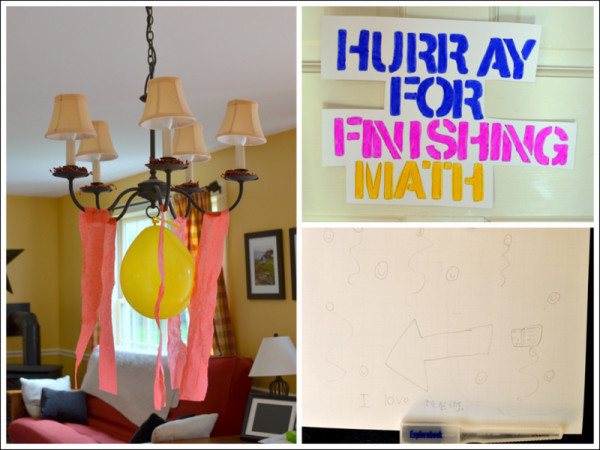
That evening we held an impromptu party to celebrate. I blew up the one lone balloon I could find, my daughter used strips of tissue paper to make things festive, and they both made posters. I don’t know if you can see clearly in the photo, but my son’s says “I love reading.” Does anything else warm a homeschool mom’s heart more than that? For dessert I whipped up brownies-a-la-mode.
I realized a side benefit to agreeing to the party–they excitedly cleaned up the house so it would look nice for the party. I think I see frequent “parties” in my future!
Other Homeschool Happenings This Week
We’ve been working on a Civil War Unit Study that I am trying to wrap up before testing week. I’m trying to make the type-A list maker in me relax if we don’t and allow it to flow over into summer. There is just too much to learn and discuss!
We were visited by two new-to-us birds this week. We adore our backyard birds, who are really more like friends. I’ll need to make new field guide cards like I posted about in our backyard birds nature study post. I can’t tell you the excitement when we meet a new “friend.” Everything stops and we grab field guides, cameras and binoculars.

First was a red-winged blackbird. We’ve already learned his call because he keeps sitting on the tree right behind our deck and singing away! I read that the males return from migration first and sing to defend their territory, so perhaps that was his goal.
I am curious if we continue to see him because according to my book they nest near shallow water and other than a couple small wet areas in our neighborhood we aren’t really near water. My boy liked the fact that this bird likes to show off his bright wing bars (called epaulets) because it reminded him of generals.

Our next friend was the white-throated sparrow. I was fascinated by the two different color variations, white-striped and tan-striped, which I initially thought were two different species. The field guide says white-striped adults tend to mate with tan-striped adults but scientists don’t know why. Isn’t that fascinating? I love showing my kids how there are still things to be discovered and understood in the world!
Things I’m Working On
Planning! I love it but wish it was all I could do for a few weeks. Once I start dreaming and scheming about next year it’s hard to focus on anything else. I’m narrowing down the major subjects, have papers scattered about me at all times with notes, ideas and figures.
One of my biggest struggles with planning is to plan a reasonable amount. I am never short on ideas and I am intrigued by nearly all subjects, so I tend to over-plan and then feel “behind” when we can’t get it all done. That isn’t just in homeschool but tends to happen in my life in general.
My goal is to simplify so we’re focused on the subjects and learning methods that leave us entirely enriched but also happy and relaxed. Can I plan more reasonably now, with two years of experience? Do any of you struggle with over-planning?
Thank you to the wonderful hostesses with fun link-ups on Fridays. Be sure to join the fun and see what other homeschoolers are up to!
10 Crafts to Encourage Creativity in Kids
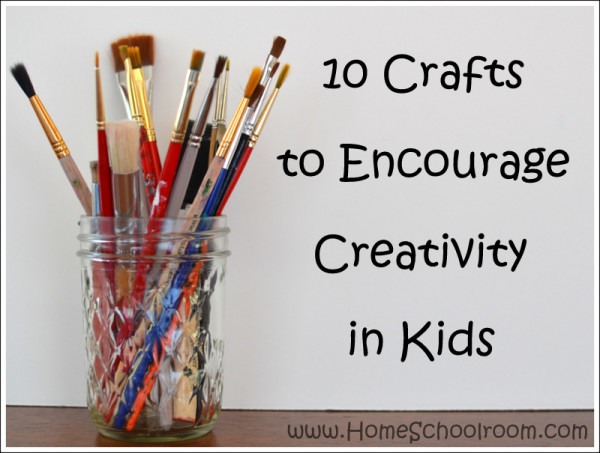
The topic for this week’s iHomeschool Network Top Ten Tuesday is toys! Why am I talking about crafts, you ask? Well, my children are by no means short on toys but I hate the clutter and single-purpose types of toys that fill the shelves these days. Toys that support open-ended play like Legos and puppets are the only toys I don’t try to sneak into the yard sale pile. Something I love to see my children use their free time for is creating something.
I have always enjoyed crafting, so I’ve kept a craft cupboard stocked with supplies my kids can use since they were preschoolers. I don’t like to have them always following my (or someone else’s) exact directions to arrive at a prescribed end product, but I’ve found that when introducing craft supplies it helps if we work together at first, or I provide a book or video with instructions for their first project or two. Once they get their feet wet they’re ready to branch out on their own and create to their heart’s content.
Here’s my list of 10 types of craft supplies to keep on hand for creative inspiration:
#1 Drawing Supplies
Drawing may be the simplest craft, but having some extra supplies on hand makes it a little more interesting. I stock mechanical pencils, colored pencils and fun drawing tools like actual drawing pencils that make shading easier, pens of different thicknesses for line drawings, and gel pens for fun. Invest in some how-to-draw books for instruction and inspiration. What is nice is that you can find how-to books for just about any interest your child has (for my son it was military vehicles). Chalk pastels are as simple to use as crayons with a lot more ability to mix and blend. Tricia at Hodgepodge posts wonderful pastel lessons to get you started.
#2 Painting Supplies
Each of my children uses one of Daddy’s old shirts as a smock and I stock various types of paints:
- Watercolor: Tray and liquid watercolors are both fun. With watercolor pencils your child can use them like regular colored pencils then use a wet brush to blend. With any watercolors it’s best to use a heavier-weight paper. Sometimes we just use white cardstock, but other times we break out the real watercolor paper. (Kids love using grown-up supplies.) Klutz has a nice beginner watercolor book that teaches some beginning strokes.
- Tempera: I buy the washable kind and it’s great for thick coverage on paper.
- Acrylic: I stock up on different colors when they’re on sale. We use acrylic if we’re painting on something other than paper: wood, cardboard, rocks, you name it!
- Don’t forget specialty paints: We’ve made great gifts for grandparents out of plain mugs, coasters, place mats and tote bags using glass/ceramic, metal and fabric paints.
#3 Sculpting Supplies
Don’t let the fancy term frighten you, there are many options to try that aren’t difficult. First off there is gold old homemade playdough. I’ve shared our personal favorite recipe before, and I must say my son still plays with it most days. He reenacts battle scenes from our history studies or runs trials with his creations (he’s a big fan of Mythbusters right now).
If your children want to keep their creations there are two great options:
- Air Dry Clay: We’ve used air dry clay during history studies to make candle holders. It’s easy to mold and you simply leave it out to dry. After drying it can be painted.
- Sculpey Polymer Clay: This is one of our all-time favorite craft supplies. It comes in loads of colors (or buy white and paint it after it’s baked). It’s a little difficult to soften when you first start, but using a little muscle it’s easy to sculpt. After the creation is finished you bake it in the oven to harden it. My daughter uses Sculpey to make food and accessories for her Victorian doll house.
#4 Duct Tape Crafting
Just about every kid enjoys crafting with duct tape. As an independent craft your kids should be a little older because you have to use a sharp knife to cut the tape. We use a self-healing fabric cutting mat as a work surface. The book Tape It and Make It helped my daughter with basic construction skills and some cute projects to get started.
#5 Stamping Supplies
My son doesn’t always enjoy drawing so stamping is one of his favorites. From his own rubber stamps of vehicles and bugs, to sets I’ve bought with letters and holiday images, he has fun using them to make pictures and cards for people. I buy washable stamp pads for using with rubber stamps and it’s also fun to use them with your fingers like Ed Emberly to make pictures.
#6 Card Making Supplies
I purchase packs of blank cards and envelopes at the craft store. (I use a coupon or wait for them to be on sale then buy a pack of 25 or 50.) I keep lots of supplies on hand for decorating: fancy edge scissors, paper punches (the that work almost like scissors are easiest for their hands), colored card stock, and of course they can use our other supplies like paints, gel pens, and rubber stamps to decorate them. I lay out the supplies after Christmas and birthdays and have them create their own thank you cards.
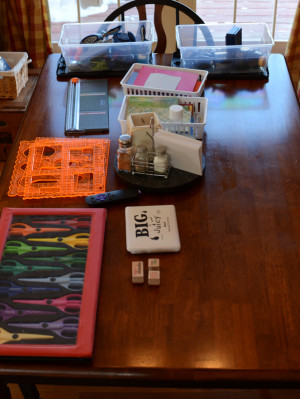
#7 Recyclables!
In our basement I keep a large cardboard box where I throw things that would normally go in our recycling that my kids are free to use any way they wish. Egg cartons, oatmeal canisters, orange crates, glass jars, bottle caps, shoe boxes, cardboard tubes (I prefer ones stronger than paper towel tubes–like the ones from plastic wrap and aluminum foil), and any other odds and ends that look promising. They build all sorts of things and I don’t have to worry about overseeing what supplies are being used.
#8 Sewing Supplies
Don’t be turned off just because you don’t sew! I have two easy recommendations to get you started.
- One is a superb book called Sewing School. It is filled with wonderfully easy to understand instructions that will help your child with the very basics (like threading a needle and the simplest stitch) and includes instructions for kid-friendly sewing projects with patterns included in a pocket in the back.
- The other tip I have is to keep sheets of craft felt on hand. You can buy sheets of craft felt very cheaply, it comes in a rainbow of colors, and it’s great for beginning sewers. I keep a bin of it that the kids can cut shapes out of and sew together using craft thread and a large needle. They make little creatures, blankets and pillows for dolls and stuffed animals, and anything else they can think of. Because it’s inexpensive they’re free to try to make things (even if the project doesn’t work out) and they don’t have to worry about the edges fraying like fabric.
#9 Odds and Ends
This is my category for all those random supplies you can pick up and wonder what they could be used for–but don’t worry, your kids will make them into something! Keep your eye out for inexpensive bags of popsicle sticks, googly eyes, pipe cleaners, yarn, old-fashioned style wooden clothespins, feathers, and pom poms.
#10 All-in-One Craft Kits
All-in-one kits are great to have on hand (and give as gifts). We’re big Klutz fans and my kids have enjoyed projects like paper airplanes, friendship bracelets, Twirled Paper (Quilling), and Twisted Critters (Pipe Cleaner Animals). These kits are especially great for craft-challenged households because they’re really designed for the kids to do on their own and come with all necessary supplies.
I hope I’ve persuaded you to stock your craft cupboard if you don’t already. Now is the perfect time so you can just point the way for a sure summer boredom buster! What do you keep on hand for those moments when the urge to create strikes your kids?
Hop over to iHomeschool network to see what toys make other blogger’s top ten lists.
{Every Tuesday for the next 10 weeks I’ll be participating in a blog hop of top ten lists.}
This blog hop series was inspired by Angie of Many Little Blessings where you’re welcome to link up, too!
Setting our Sights on Summer Vacation
Is anyone else out there ready for summer break? I’ve been so busy for the last month that I’m daydreaming about our camping trips and reading while the kids comb the beach.
- We took a wonderful trip to Washington, DC. That isn’t the kind of vacation that leaves you feeling rested, you know?
- I participated in my first-ever iHomeschool Network 10 Day series with resources for a 50 States Study. (Phew, that was a lot of work! If I suggest doing that when we have plans to go away please remind me.)
- Some activities are wrapping up and we’re planning for special endings
With all the beautiful weather here it’s feeling like summer in Maine (70s most days). It prompted us to get outside, and we’ve set a family goal of 10 new hikes this year.
Hike #1: Beech Mountain in Acadia National Park.
The trail was just what we like–not too strenuous, lots of interesting natural features and views along the way, and the ability to make a loop so we don’t have to go back the way we came.

But the most memorable part of the hike is actually the Spruce Grouse story. As we arrived at the summit two other hikers warned us about a territorial Spruce Grouse. Sure, we said, figuring we’d keep the noise down and just steer clear of her turf.

The problem? She was guarding the ENTIRE top of the mountain. We’d try to follow her lead and go away from her space, find an area to take pictures and eat a snack, and she’d head our way again.
Side note: I am afraid of birds. Yes, you read that right. I’m not afraid of wild birds that fly away when you try to get close, but larger birds that stare at me and look willing to peck my eyes out frighten me. Go ahead and laugh. I think it actually stems from a terrifying car ride with my aunt and her Cockatoo. He escaped her grasp and perched on the back of my seat. Okay, back to our story.
She was not the least bit afraid of us and would chase us down wherever we went, making it clear she wanted us to leave. There was no pleasing her or shooing her away, so we headed down the trail to eat our snack somewhere else. {And I kept looking over my shoulder expecting to see her glaring eyes behind me.}
We informed the next hikers on their way up, and we could tell they were thinking, “Yeah, whatever.” I do wish we could have seen them on the way down.
What’s a homeschool mom to do after an event like that? Turn it into a lesson, of course! We spent some time researching the Spruce Grouse and completed a notebook page.
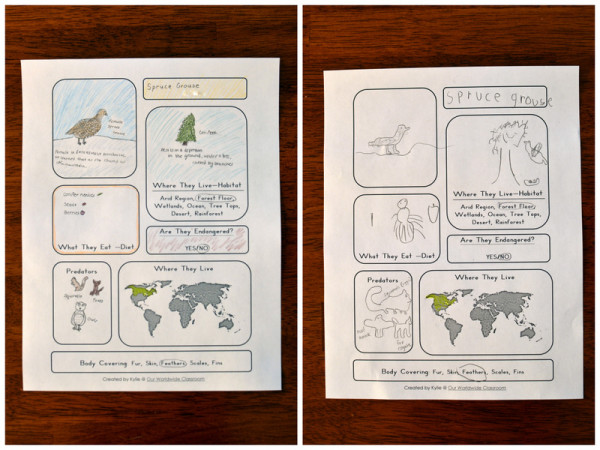 *In case you’re wondering, that notebook page is a freebie from Our Worldwide Classroom.
*In case you’re wondering, that notebook page is a freebie from Our Worldwide Classroom.
Other School Happenings
We’re working hard to finish things up before the end of our school-year schedule. (We homeschool year round, but slow down in the summer.) The kids and I are very motivated to finish the few things that must be done before I can close the books on this year: my son’s Funnix lessons, my daughter’s Teaching Textbooks 5, and our Civil War unit study.
We’re also keeping an eye on the Robin nest cam from Heather at Blog She Wrote. When we’d focused on birds in our nature study we watched hummingbird and eagle cams, so it’s neat to compare the differences. We’re really excited for when those little blue eggs hatch!
Other Things I’ve Been Working On
Did you catch my list of 10 Things I’ve Learned While Homeschooling? Then yesterday I jumped in to share some of the Realities of Homeschooling. Just so you won’t think I’m perfect or anything. (Quite a laughable idea, really.)
I’m also planning for our summer school and next year. I actually love the planning! Other than that I’m gardening and mowing. I was sort of hoping the grass wouldn’t grow until we were on our summer school schedule but it didn’t cooperate.
Thank you to the wonderful hostesses with fun link-ups on Fridays. Be sure to join the fun and see what other homeschoolers are up to!
The Reality of Homeschooling
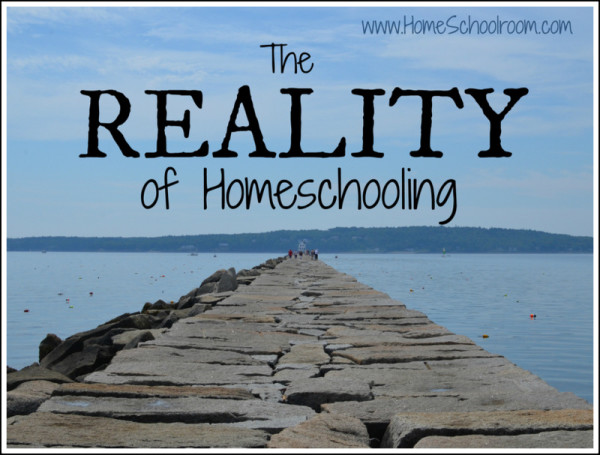
Once I got over the horror of the idea of homeschooling I read a lot of books and blogs and fell in love with the concept. I donned my rose-colored glasses and forged ahead with a plan to homeschool my children. I had visions of how it would go, formulated from heart-warming stories and lovely photos of this unique lifestyle.
Here are some of the dreamy myths I created in my head, and the real-life picture of homeschooling in our house:
Myth #1 The Warm Fuzzies of Homeschooling
I lived our days in my head many times as we finished up my daughter’s 2nd grade year in public school. I envisioned days spent curled up (by the fire in winter, on a blanket under a large shade tree in summer) with classic books, my children gazing at me with rapture as I imparted the wisdom of the ages. Our days would follow a warm and comforting pattern, without any of the frenzy of today’s world. Our house would be filled with gentle voices, loving embraces, and of course always be tidy. Laundry would never pile up and all our meals would be made from scratch.
The Cold, Hard Reality
- We do love books but I hardly think I’ve ever been the subject of a gaze of rapture. Sometimes their minds wander when I’m reading and I have to re-read a section.
- Homeschool families struggle like most do with keeping a sane schedule in this crazy-busy world. There are so many wonderful activities that keep us running (church, co-ops, classes and lessons) not to mention all the normal household errands that sometimes it’s harder than you think to schedule in the home part of homeschooling.
- Don’t get me going on the house! We are home much of the time, but often quite busy, so my house looks like a natural disaster scene more often than I’d like. The sheer amount of paraphernalia of homeschooling astounds me–microscopes and math manipulatives, paints and pencils, binders and books. I’ve had everything from caterpillars to chicken bones on my counter. As we move through subjects on a busy day my desk looks like this:
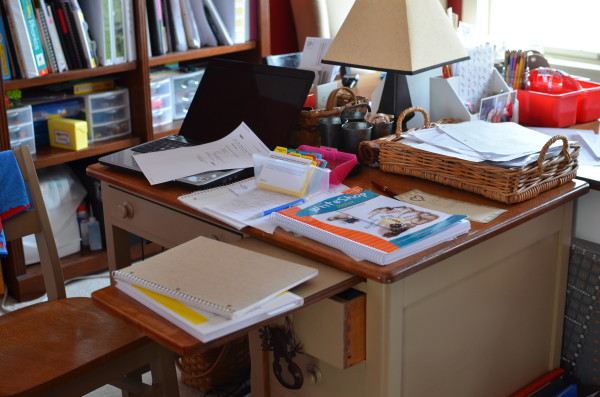
But there are beautiful moments in the midst of chaos. The books we’ve shared have become part of our family bond. We are the keepers of our schedule and can decide on priorities and be flexible to what suits our family best. My kids have the unique vantage point of being home to see that there is no fairy who cleans the house, stocks the fridge and puts away clean laundry while they’re at school so participation in chores is mandatory.
Myth #2 Homeschooled Children are Superchildren
Once my children were homeschooled, I was sure they would greet me in our schoolroom with glee each morning. “What will we be learning about today, Mother?” They would have extreme interest in every topic, and clap their hands when I broke out the grammar workbook. They would hug me and thank me and tell me I’m the best mother and teacher ever. They would cheerily do their schoolwork and help with chores, and of course never quarrel with each other. They would be National Spelling Bee champions, have perfect SAT scores, and attend college at 15.
The Reality about Homeschooled Children
- Well, it turns out that they are still children–my children–now that we homeschool. I wouldn’t say they greet me with glee every morning. I do often elicit a grin (or eye roll) with my favorite morning joke. {As soon as I hear the bus I yell out: “Kids! It’s the bus! Hurry or you’ll miss it!”}
- Sometimes their first question is phrased more like: “How much do we have to do today before we have free time?”
- I’ve had friends say they couldn’t homeschool because their children wouldn’t listen to them or their children would fight all day. And the truth is, sometimes our struggles aren’t over reducing fractions: they are about attitude.
- I’ve yet to hear one of my kids say, “Hey Mom, thanks for giving up hours a day so I can have an education tailored just for me.” I’m quite sure there are very few children who, as kids, are always grateful for the sacrifices their parents make for them.
But I am fully convinced that a focused education exactly at their level and catered to their learning style does help them reach their full potential. However, their strengths may not be in every traditional academic area. The real benefits I’m seeing aren’t about test scores but are found in children who are well-rounded with strong family and community ties, an ability to relate to all age ranges, time to pursue individual interest and talents, and the freedom to develop at their own pace. And when there are issues of the heart, who better than a me, their mother, to work through those issues with them?
I’m holding out for the thanks. I hope that someday, perhaps when they are parents, they’ll have some good memories of this homeschool life and give me my hug then.
Myth #3 Homeschool Moms are Superwomen
I was sure I would greet each day with a smile as sun streamed in my window and the birds serenaded me. I would be dressed and have an actual hairstyle when I skipped downstairs to tackle housework, diagramming sentences and meal planning (all at the same time). I would remain smiling, tender, and loving all day, helping each child in turn. I’d tuck them sweetly in to bed at night, curl up with a good book or turn my attention lovingly to my husband and fall asleep peacefully to enjoy a night of sweet dreams.
The Reality: Homeschooling is REALLY hard.
- It’s more like I stumble out of bed and head for the coffee maker. I hold up my hand to my early riser, who is attempting to engage me in a lively conversation about his weird dream last night, and mumble, “Mommy needs coffee first, buddy.”
- I lock the door when I shower or get dressed and sometimes spend a few extra minutes just hanging out so I can be alone. There are times I ask my kids to stop talking for a few minutes because I feel like my head is going to explode.
- I’ve learned a lot of hard lessons during the last two years–and one of them is that sometimes I’m the one with the bad attitude bringing down the school day. Or the one who didn’t clean up the dishes or fold the laundry when I should have–I must lead by example and often I fail.
- It’s hard not to get bitter or take any complaints or bad attitudes personally when I work so hard.
- I had a friend tell me she was surprised homeschooling suited me because she’d be pulling her hair out. The truth is that I often forget to use my soft, gentle voice. I’ve even threatened to send them to school. I daydream of dropping the kids off and having SIX HOURS to myself.
- Sometimes when bedtime comes I am talked and touched out and just want to be alone. And most nights my brain is firing away on some issue and I end up with odd dreams that are rooted in my anxieties.
The Reality of Homeschooling
When I make the joke about the bus, I’m truly grateful they aren’t on it. Whether I’m swelled with pride over what they’re accomplishing or requiring an assignment to be re-done because they didn’t do their best, letting them skip ahead because I know they understand or spending extra time going over a skill that isn’t solid yet, I’m so glad to be with them. We have deeper family bonds. I have reawakened (or discovered anew, I think) the joy of learning and love sharing the adventure with them. We have more control over our family’s priorities and more freedom to structure life to suit us. The tough parts only make us stronger.
Homeschooling isn’t perfect because we aren’t perfect. Those flaws my kids and I had before we started homeschooling? They’re still there. We’ve even noticed a few more as we spend all day together. It’s the hardest job I’ve ever worked at, and it looks like a long road ahead of us. I have to keep steady on our path, try not to trip or let the important things fall through the cracks, and keep my eye on our goals.
The bloggers of iHomeschool Network are sharing their stories of real-life homeschooling today. Comparison kills contentment, and we know it can be hard when you read blogs not to feel that other moms really have it together. As bloggers we try to share ideas, resources, and encouragement but want to make sure no one thinks any of us are perfect.
10 Things I’ve Learned Through Homeschooling
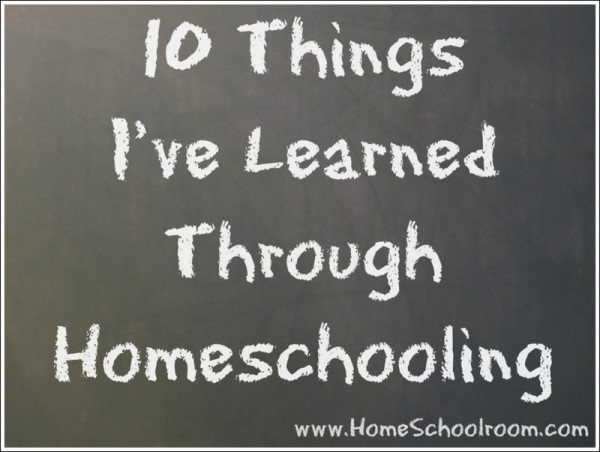
Homeschooling is the hardest job I’ve ever had. In the last two years I’ve learned a lot, and I don’t just mean catching up on history I never encountered or math I’d long ago forgotten. It has been like the refiner’s fire: the work of homeschooling sheds light on personality and relationship flaws. I have learned a lot about myself and my children, and when we use that information correctly it provides opportunities for deepening relationships and personal growth.
Here are the lessons homeschooling has taught me:
#1. Planning for homeschooling can be fun and overwhelming all at the same time.
I love making lists, choosing curriculum, and planning unit studies. Sometimes the planning can be more fun than the doing because the daily grind can make that flashy curriculum or involved unit study a chore. I’ve come to see that if I spend longer planning a unit than it takes us to go through it then I’m not managing my time wisely. There are also so many choices that I can get analysis paralysis and can’t choose. The internet is a wonderful resource but also full of differing opinions. I am finding it’s important to do my research reasonably, make an educated decision, then forge ahead to the best of my ability.
#2. You can take a good concept too far.
Working in organized units, grouping topics together, and working chronologically through topics is nice and tidy. Learning in themed units is something I love, but sometimes a little too much. I will hesitate to take advantage of a good resource because I’ll think we should save that for a full unit study. I get frustrated if we’ve finished a unit and I see another idea that would have gone with that topic. I try so hard to group everything together and work through topics methodically (and thus the planning that takes me forever, see #1). Charlotte Mason warns against making all the connections for your students, and I think I am in danger of this sometimes. I am finding my kids making fabulous connections on their own to books or topics we’ve studied months before. I am still working on loosening up on themes and taking it as it comes a little more.
#3. Simplifying is wise.
I struggle with this because I am the queen of over-complicating. I can’t seem to leave well enough alone with most curriculum or prepared unit studies. On one hand it’s good because I have no problem tweaking things to fit us, let alone the fact that I probably wouldn’t be homeschooling if I kept everything simple! On the other hand it has negative implications because I tend to over-think, over-research, and make things harder than they should be (see #1 and #2!). I am working one knowing when enough is enough and stop planning and fretting and just let things flow. Writing down my priorities and referring back to them is helping, as is gaining more experience so I can relax a little.
#4. The world is fascinating!
I was an A student all through school and college and a pro at doing what was necessary for the grade and then promptly dumping the information from my brain. I was not excited about the information or focused on the topics–I was focused on the grade. Now I’m finding I have an interest in everything: history, fine arts, nature study…it’s never too late to ignite a love of learning!
#5. Patience is a virtue that takes practice.
Unfortunately patience is not one of my natural strengths. Diligence and responsibility are, but patience? Not so much. I have zero patience with bad attitudes, dilly-dallying, silliness when it interferes with necessary tasks, having to repeat myself due to lack of paying attention, frequent reminders to pick up the Legos or dirty socks, loud or hyper behavior, interruptions when I’m talking or reading aloud… well, you know, things kids can be pretty prone to doing. I don’t often remember to use my gentle voice when reprimanding or reminding. The good news? Practice makes perfect. Homeschooling is stretching me in this area, God is coming along beside and equipping me, and we’re all learning and loving each other despite our imperfect natures.
#6. Lessons are learned best through example.
As I see behaviors I would like to change in them, I can often find a related problem in myself. I have to work on my own bad habits before I can address those of my children. Speak kindly and respectfully at all times. Do my work cheerfully. Pick up after myself and keep the house tidy. Again, loads of opportunity for personal growth and modelling that continual growth and effort to my children.
#7. It’s easy to forget to enjoy your kids when homeschooling.
I can be so focused on my goals and ever-growing to-do list that I forget to just spend time with my kids relaxing, having a (noneducational) conversation, or just looking at the clouds. It was a bit easier to just BE with them when I didn’t have their education on my mind 24-7. Should they be learning Latin? How can I incorporate more project-based learning and independence? Am I working with them enough on math or spelling or…? My mind reels and I forget that often what really matters is love and attention from me. This time will fly by, and as long as they love to learn and are prepared to learn their whole life it will all work out.
#8. Homeschooling isn’t like just being at home together, and it is hard work!
The mental drain of responsibility for their education and overseeing their daily tasks puts extra demands on the homeschooling parent. I’m an introvert, and the sheer amount of interaction and talking required wears me out most days. I realize that my style of homeschooling amplifies this–we read aloud a lot, work on subjects together, incorporate lots of hands-on activities, and shy away from worksheets. I’ve found ways to cope like daily quiet time. It took me a bit of time to realize the next lesson learned:
#9. You have to take care of yourself in order to do your job well.
Everyone uses the analogy of putting your oxygen mask on first so you can help your children. It is true–learn what you need to feel fulfilled and schedule it in. For example, I have learned I cannot skimp on sleep to get more done. Now, that’s not to say I don’t try when things are busy, but it is never a wise move. I suddenly become less productive and overly cranky. There are many other priorities for my mental health: time with my husband, time with friends, time for personal interests. I wrote about making time for things other than homeschooling, and shared techniques I learned over time to (try to) keep a balance in all things.
#10. Homeschooling requires a lot of time, energy, and sacrifice but it is worth it.
I’ve had to give up a lot of myself and my time to homeschool and it hasn’t always been easy. I sometimes complain or feel grumpy or longingly listen to moms who have hours a day to themselves. But most days I remember to be grateful we can set our family priorities. When we’re hiking on a gorgeous weekday, learning about a period of history all together, or getting extra time with Daddy I am overwhelmed with gratefulness.
Hop over to iHomeschool network to see what others have learned through homeschooling. Every Tuesday for the next 10 weeks I’ll be participating with the other bloggers of iHN in a blog hop of top ten lists.
This blog hop series was inspired by Angie of Many Little Blessings where you’re welcome to link up, too!
Ten Things to do when Visiting Washington, DC with Kids
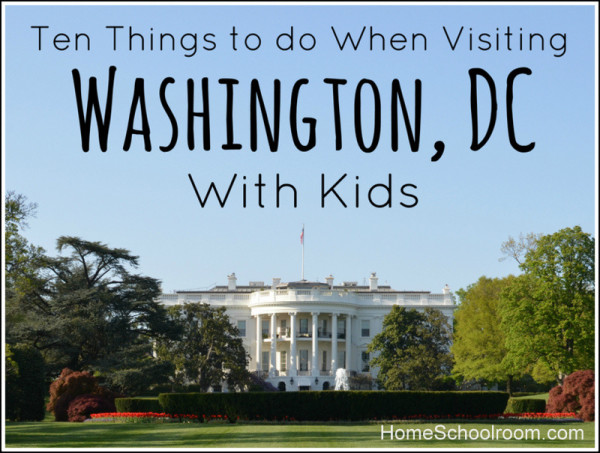
Washington, DC is a fabulous place to visit, full of history and amazing architecture with educational opportunities around every corner. There is so much to see and do–and most of it is free! We recently returned from five full days exploring our capital from morning to night and could easily have spent a month…if our feet could have handled any more walking.
We did a lot of research and advance planning for this trip. We’ve been studying American history for the last two years, so much of what we would see related to something we’d learned and this enriched the visit for my children. We also read through The Kid’s Guide to Washington, DC for an overview of the main attractions to prioritize our time. You definitely can’t do it all!
This isn’t an exhaustive list of activities and places to go (there are hefty guide books for that), but I wanted to share the major activities we enjoyed on our trip with a seven and ten year old. I’m listing them in reverse order, so if you have less time in DC scroll down for the top choices that had the biggest impact on our family.
#10 The Pentagon
We scheduled a tour ahead of time. For the most part the inside of the Pentagon looks just like a regular office building (albeit a big one with escalators and stores), but the tour guide was an impressive young man who shared about the history of the building and the military in general. The best part of this tour was the memorial where the plane hit on 9-11. It’s very touching to stand in the Pentagon looking out the window at the hotel that had antennas knocked off by the low flying plane.
#9 Supreme Court

The front of the Supreme Court building looks beautiful, though we only saw a printed drape because of construction. The inside is incredible: huge, marble, and designed to impress. You can watch a video and listen to a talk by a tour guide, and if court isn’t in session you’ll visit the actual chamber.
If you’ve studied the three branches of government with your children like we did during our Government Unit Study it’s worth the time to visit the home of the Judicial Branch.
#8 The National Zoo

I’ll admit zoos give me mixed feelings: it’s fascinating to see these animals up close, but I can’t help think how contained some of them are versus their natural habitat. That being said, we enjoyed our visit to the Smithsonian National Zoological Park. There was one clear highlight, and that was a sea lion that wanted to play. My son was mesmerized and wanted to stay forever.
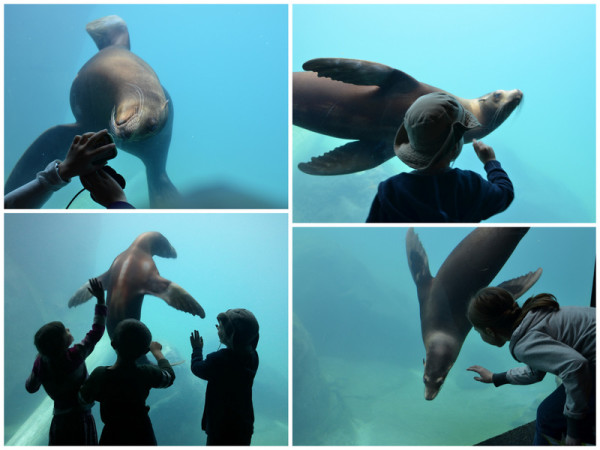
#7 Museums
Which museums should you visit, you ask? You can’t possibly see everything in every museum. All the Smithsonian museums offer free admission, so those topped our list.
Our favorite, which may be less popular than some of the larger museums, was probably the National Postal Museum for its hands-on exhibits. We loved the display about Owney, the famous postal service dog from the late 1800s. (We’d read about him in the book Owney, The Mail-Pouch Pooch. Check out the museum page for other resources and free curriculum.)
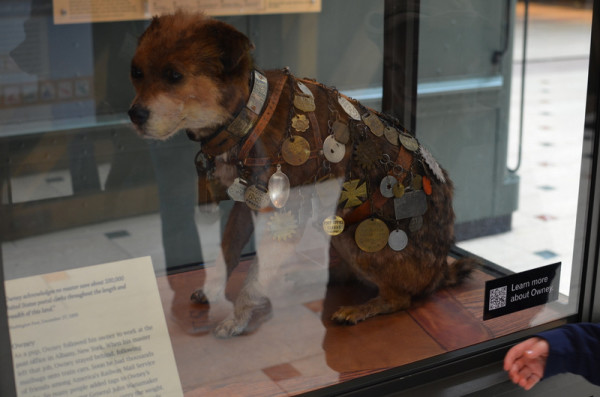
We prioritized the Museum of American History because of our history studies and the Air and Space Museum because of one little boy who wanted to see all the planes and space ships.
There are many other museums we just couldn’t fit into our schedule: the International Spy Museum, the Newseum and the Holocaust Museum (my kids were under the recommended age for this). My recommendation is to not try to rush through them all, but pick ones of particular interest to your family.
#6 National Archives
How can you pass up seeing the actual Declaration of Independence, Constitution, and Bill of Rights? The children’s book The Journey of the One and Only Declaration of Independence prepped my kids for the wonder of seeing the Declaration still in existence.
There are many other exhibits at the archives–the highlight for us was seeing Charles Ingalls’ actual handwriting on his homestead paperwork. I recommend scheduling your National Archives tour in advance to save on waiting.
#5 The White House

Unfortunately White House tours were cancelled due to budget cuts, so perhaps this would be even higher on our list if we could have gone inside. We read The Story of the White House for the background on this residence with so much history.
We could see the garden and even caught a glimpse of the President’s dog running on the lawn! The view from the front and the back is lovely, and don’t forget to check it out at night!
#4 The Monuments
We began our tour of the monuments of the National Mall at dusk, our goal being to end at the Lincoln Memorial after dark when it would be lit up. We began at the Vietnam Memorial.

I whispered to my kids, “Look at all these names.”
I could see that they understood. The stone was warmed by the sun and we ran our hands over the etched names and the combination of the visual simplicity of the monument and the tactile nature is overwhelming.
We’ve talked about the Vietnam War, and the public opinion debates, and how some soldiers were treated when they returned. We’ve talked with Vietnam veterans that greet planes of soldiers coming and going at the airport in a city near our hometown. Standing at the memorial you SEE and FEEL the sacrifices made by so many.
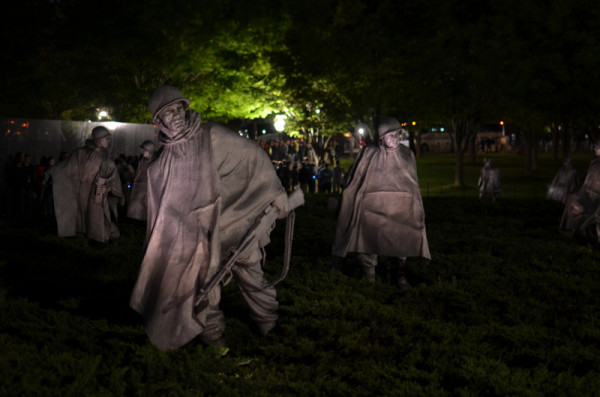
The second most moving monument for us was the Korean War memorial. It was near dark when we arrived, and the statues of soldiers moving through the low growing plants seemed ghostly. We were able to see how the soldiers were dressed and moving and imagine their feelings. This memorial sparked discussion about current events in North and South Korea.

We ended as planned at the Lincoln Memorial. We’d read so much about this amazing man, and his monument is as awe-inspiring as his true story.
#3 Arlington National Cemetery

Our #3 and #2 spot aren’t in DC, but are worth the time to visit while you’re in the area. Arlington National Cemetery is a visual reminder of all that’s been sacrificed for the country we enjoy today. Rows of simple white stones line the rolling hills in this beautiful, poignant place.

While there be sure to view the changing of the guard at the Tomb of the Unknown Soldier. The reverence paid to those who have given their all, and the sense of duty you’ll see in the men serving at the tomb will stay with you and your children.
#2 Mount Vernon

So much work has been done to restore and preserve George Washington’s Mount Vernon residence to be just as it was when he called it home. It was fascinating to see how he lived and walk on the grounds he loved.
The slave quarters and contrast between the lifestyles gave us so much to think about. The tour of the house has to move quickly to move so many people through, but roaming the estate you can take your time. Throughout the grounds there are informative signs and tour guides to answer questions.
#1 The Capitol Building

Our Capitol tour topped the list for all of us. There are public tours of the Capitol building, but I highly suggest contacting your Senator’s office well in advance. Maine Senator Susan Collins popped out of hearings to take photos with us and had a staff member give our small group (my family and two other adults) a lengthy tour.
The staff member was wonderful and allowed us to linger, take pictures and ask questions. We were able to observe in both the House and Senate galleries, watching the process of our government’s legislative branch. We also learned a lot about the history of the building and interesting background stories.

For instance, the statue of Ronald Reagan has pieces of the Berlin wall built into it. We could see where people rub the foot of the Will Roger’s statue for good luck. Our favorite story is probably the infamous “whisper spot” where John Quincy Adams could pretend to sleep and overhear conversations in the room. The acoustics are such that from his spot someone talking quietly from the other side of the room sounds like they are right next to you! (Make sure your tour guide demonstrates this–it is unreal.)
I hope this list helps any of you that are considering a trip to Washington, DC. It has to be the most fascinating vacation we’ve every taken, and we’re already brainstorming what we’d like to do someday when we return to our nation’s capital. For those of you that have visited, what is on your must-do list for Washington, DC?
Thank you to the wonderful hostesses with fun link-ups on Fridays. Be sure to join the fun and see what other homeschoolers have been up to!
Food From the 50 States
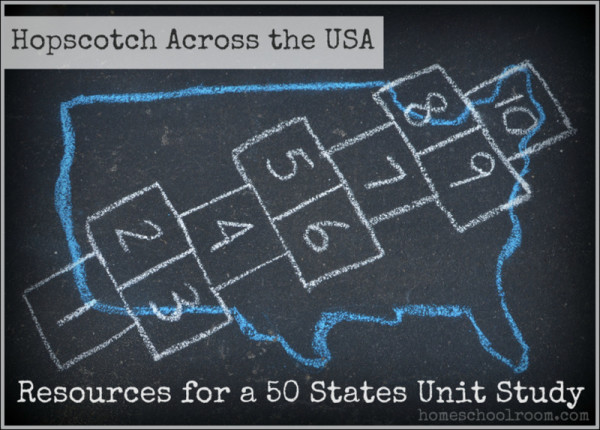
Welcome to the last day of my 10 day Hopscotching the USA series! I’ve saved one of my favorite elements of our 50 states unit study for last: the food!
I wanted the recipes we made to be a regional dish, using a food item a state produces, or have originated in a specific state. A few may have just been more fun than educational, but that’s okay, too. The foods helped not only make the study a lot fun but reinforced the diversity and blending of cultures in America.
These are a the resources I used to find recipes:
- Recipes from all 50 states are listed on this site. I appreciate the work that went into finding truly unique recipes that really can be identified with something special about the state and often have the name of the state in it.
-
Allrecipes.com is our family’s go-to site for recipes anyway, and if you type in a state name (or city or type of cuisine) in their search box you’re likely to find many recipes. This would be how I found a recipe if I was familiar with a popular item (like a Philadelphia Cheesesteak sandwich). A general internet search for a well-known recipe will also turn up many results, I’m just a big fan of Allrecipes.com because of the reviews.
Just to whet your appetite, here are the foods we enjoyed that went along with our 50 states study:
Northeast
Massachusetts: Boston Creme Pie was a big hit. My son actually requested it for his birthday dessert that year.
Connecticut: We ate hamburgers in honor of Louis’ Lunch, which the Library of Congress says sold the first hamburger. There are other locations also claiming to be the first. It definitely appears to be a truly American meal so why not have a hamburger for each of the states?
New England: Living in New England I can tell you that maple syrup season is a special time of year. Be sure to have some syrup for breakfast during your studies of the Northeast.
Vermont: Indulge in some Ben and Jerry’s ice cream, known for their creative flavor combinations and the names they give them.
Maine: We enjoyed our favorite recipe for blueberry muffins for breakfast (though my daughter was hoping for her favorite–boiled lobster).
New York: Luckily a local restaurant says it serves New York-style pizza. I’m not sure if it is just like the pizza in New York, but it was delicious.
Pennsylvania: I tried my hand at Philly Cheesesteak sandwiches and for dessert we enjoyed Hershey’s Kisses
Southeast
Louisianna: I made Jambalaya and it may have been the most memorable food from the whole year. My kids thought it was far too spicy and for some reason they remember it as the worst meal they ever ate. Even now Jambalaya is almost a scary word around here. (Which means I love to tease when they ask what’s for dinner. “Why, it’s Jambalaya honey!”)
Mississippi: Mississippi mud pie was a yummy treat.
Georgia: If you’re feeling healthy have some peaches, or if you’re looking for a dessert try peach cobbler.
Florida: Enjoy an orange while you study Florida.
Kentucky: Eat at a Kentucky Fried Chicken (if your arteries don’t mind too much).
Alabama: I’m not from the south but this is our favorite recipe for Pulled Pork and it’s easy because it’s in the slow cooker.
Virginia: We bought a honey-glazed ham and enjoyed a lovely dinner.
Midwest
Wisconsin: Check the labels at your grocery store–I didn’t have any trouble finding cheese from Wisconsin, the largest cheese producer in the U.S.
Illinois: We enjoyed Chicago-style Deep Dish Pizza. (Luckily there is a Pizzeria Uno nearby!)
Southwest:
Texas: Texas Sheet Cake was an indulgence. I highly recommend Pioneer woman’s recipe, which she calls The Best Chocolate Cake ever. She might be right.
General Southwest: I tried my hand at a healthy version of homemade tortillas, and my family would love it if I made them regularly but it is a bit tedious. For easier versions just try some tacos or chips and salsa!
Oklahoma: We tried a frozen version of fried okra.
West
Washington: Red Delicious apples made for a healthy snack and dinner was a grilled salmon steak.
Idaho: We ate potatoes, of course!
Hawaii: We hosted my parents for a Luau-style meal: pineapple, Kalua pig, sweet potato, and Hawaiian Wedding Cake.
Thanks so much for joining me over the last 10 posts, and hopefully you’ve found some helpful resources to embark on your own journey through the 50 states!
Here are the topics from this series:
Day 1: Introduction to the 50 States Unit Study
Day 2: Learning About the States
Day 3: Getting to Know Your Geography
Day 4: Games to Play
Day 5: Recording Your Journey
Day 6: Famous Places in the USA
Day 7: Natural Attractions
Day 8: Nature Study
Day 9: The People of America
Day 10: Food from the 50 States
I’m teaming up with over 25 other iHomeschool Network bloggers. Hop over to iHN for ideas from veteran homeschooling moms on topics ranging from Teaching with Legos to Project Based Learning.
50 States Unit Study: The People of America

Welcome to Day 9 of Hopscotching Across the USA! I’ve been sharing resources for a 50 states unit study, and today I’m sharing about one of the most important things in a country–the people! You can spend a little extra time learning about important individuals and also cultures and traditions of Americans.
*This post contains affiliate links.
Famous Americans
You will come across countless amazing people during your 50 states study. We spend more time on famous people and their contributions during our history studies, and sometimes the specific state they were from is unimportant. That being said, we did pause to learn about some well known Americans. Our kids always benefit from reading about good people doing good things, from figures in the very formation of our country to more modern heroes that landed on the moon.
If you’re looking to find out who hails from the state you’re studying, 50States.com offers a list of famous people from each state. For a little more information the America’s Story website has short biographies on their “Amazing Americans” page. And another resource we used are the picture book biographies by David Adler. They are a great length for adding into your 50 states study. These are a few we enjoyed:
- George Washington (you can still visit his Mount Vernon estate in Virginia) lends his name to our capital and the state of Washington: A Picture Book of George Washington
- Davy Crocket, born in Tennessee, is the epitome of a frontiersman: A Picture Book of Davy Crocket
- Abraham Lincoln was born in Kentucky, but also lived in Indiana and Illinois before becoming president: A Picture Book of Abraham Lincoln
And just to give you more examples here are two other famous Americans that piqued our interest:
Prompted by Theodore Roosevelt’s conservation work that we still benefit from today, we read Don’t You Dare Shoot That Bear: A Story of Theodore Roosevelt.
Neil Armstrong, the first man to set foot on the moon, was born in Ohio. Biography.com has information and videos, and we read the book The Story of Apollo 11 from the Cornerstones of Freedom series.
Cultural America
Americans are the product of the great melting pot, and that provides a lot of opportunities to tie in diversity as you learn about the people of the fifty states.
Music
I used Pandora stations and YouTube videos to highlight some of the musical styles that began in our country: bluegrass music and banjos when we studied Kentucky, blues in Mississippi, jazz in Louisianna, and country music at the Grand Ole Opry in Tennessee.
Events
You can’t talk about New Orleans without talking about Mardis Gras, and National Geographic Kids has a nice short video on the history of Mardis Gras.
When you’re studying Indiana you’ll notice the symbol on the quarter is about car racing and you can share about the Indianapolis Motor Speedway.
Our great northern state of Alaska is the site of the famous Iditarod sled dog race that also commemorates a historic dog sled relay for life saving serum. (If this really interests your kids, I wrote a post about our full unit study on the Iditarod.)
Cultures
-
The Amish: There are Amish communities in several locations in our country. We watched a nicely done documentary by PBS called The Amish: A People of Preservation and read several picture books to acquaint my children with the Amish:
-
Raising Yoder’s Barn by Jane Yolen tells the story of a barn raising.
- The Journey by Sara Stewart tells the story of a young Amish girl’s trip to a big city, and how she appreciates her family’s lifestyle.
- Reuben and the Blizzard and Reuben and the Quilt by Merle Good are charming stories about an Amish boy.
-
- Native Americans: The children’s book series “If You Lived With…” gives a view into Native American cultures.
- If You Lived with the Hopi (Arizona)
- If You Lived with the Iroquois (New York)
- If You Lived with the Sioux (the Dakotas)
- If You Lived with the Indians of the Northwest Coast
- If You Lived with the Cherokees (Southeastern U.S.)
- Cowboys & Rodeos: we’re Jan Brett fans and got a kick out of her book Armadillo Rodeo that shares a nine-banded armadillo’s visit to a rodeo.
Come back tomorrow when I’ll share the highlight of our study: Food from the 50 states! Subscribe via email or RSS so you don’t miss a post!
Here are the topics from this series:
Day 1: Introduction to the 50 States Unit Study
Day 2: Learning About the States
Day 3: Getting to Know Your Geography
Day 4: Games to Play
Day 5: Recording Your Journey
Day 6: Famous Places in the USA
Day 7: Natural Attractions
Day 8: Nature Study
Day 9: The People of America
Day 10: Food from the 50 States
I’m teaming up with over 25 other iHomeschool Network bloggers. Hop over to iHN for ideas from veteran homeschooling moms on topics ranging from Teaching with Legos to Project Based Learning.



